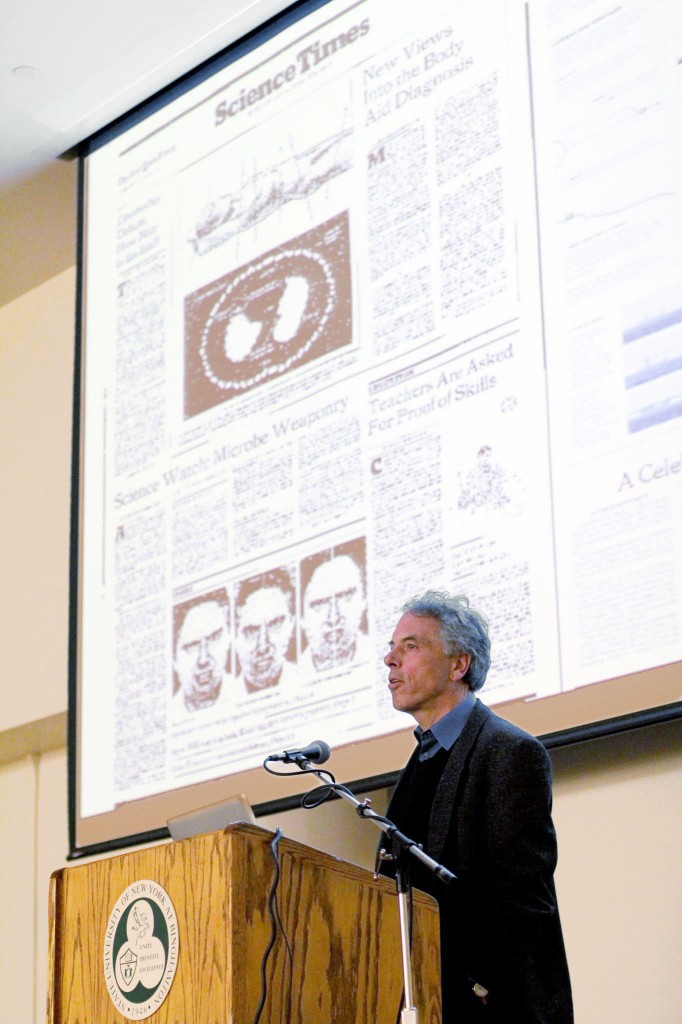
David Corcoran, the editor of The New York Times’ weekly Science Times section, spoke on Wednesday in the Mandela Room as part of The New York Times Campus Readership Program. About 40 students, faculty and staff members attended.
Corcoran discussed how the Times has changed over the last 100 years, stating that while the quality has remained consistent, they have undergone immense design changes. He also spoke about his career and the current state of journalism.
“We make a great effort to be easier on the eye and be friendlier to the readers [compared to 1912],” Corcoran said.
He compared a current issue of the Times to one from the early 1900s, pointing out the differences in column sizes, font styles and the use of graphics on the front page to make the paper seem more inviting.
Corcoran said that unlike other news outlets, the Times does not strive to make a profit, which is why they can dedicate a section to science.
The majority of the presentation was formatted as a question-and-answer session, which focused on journalism careers.
Corcoran said breaking into the news business is different than when he started in 1988.
“In those days, it was comparatively easy to get hired, even without newspaper experience,” Corcoran said.
While the essentials have stayed the same, present-day journalists need to have skills using the Web, as well as writing.
“The most important thing for a new journalist starting out is enthusiasm and a great willingness to work hard and get it right,” Corcoran said.
He added that enthusiasm and a good work ethic alone are not enough.
“It’s very important to be able to write a news story that is clear and accurate,” Corcoran said. “Some skills can be learned and some skills are innate.”
Kate Flatley, vice president for academic affairs, whose office is responsible for the Times Campus Readership Program, thought the lecture went well.
“I was generally pretty happy despite the low turnout,” Flatley said. “I think the lecture was well-received.”
Flatley said she brought Corcoran to campus because students voiced interest in his field in an email survey.
“When we did the survey, science and technology won by 3 or 4 to 1,” she said.
Aaron Ricks, editor-in-chief of Binghamton Review, said he thinks it is important to bring this type of lecturer to campus.
“Without a journalism major on campus, The New York Times Program probably provides students with the best opportunity to learn about careers in a field that is very popular with students,” Ricks said.


